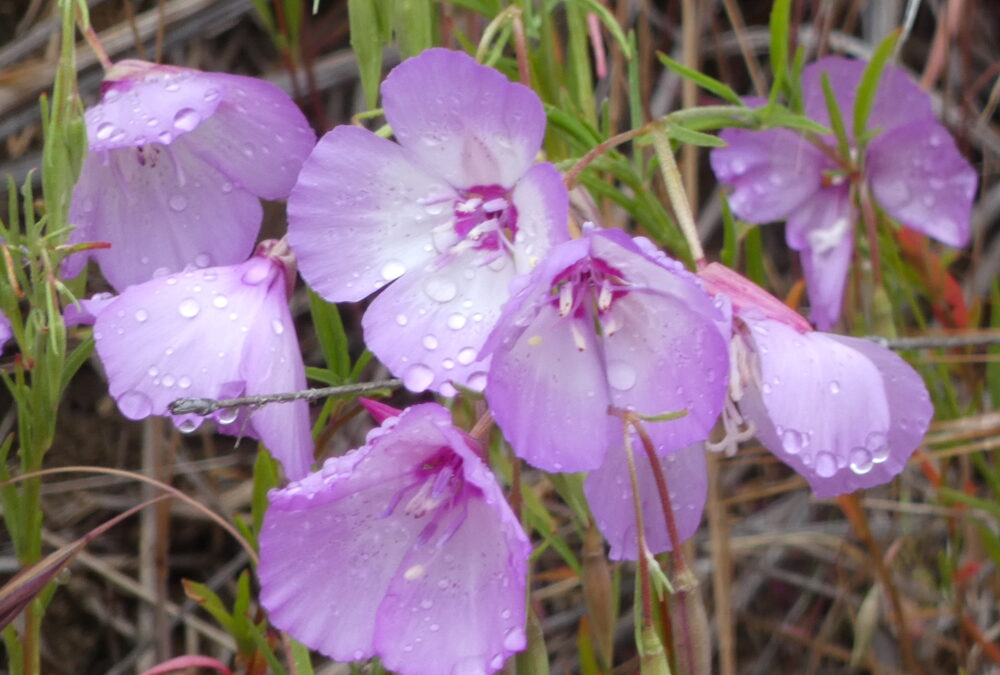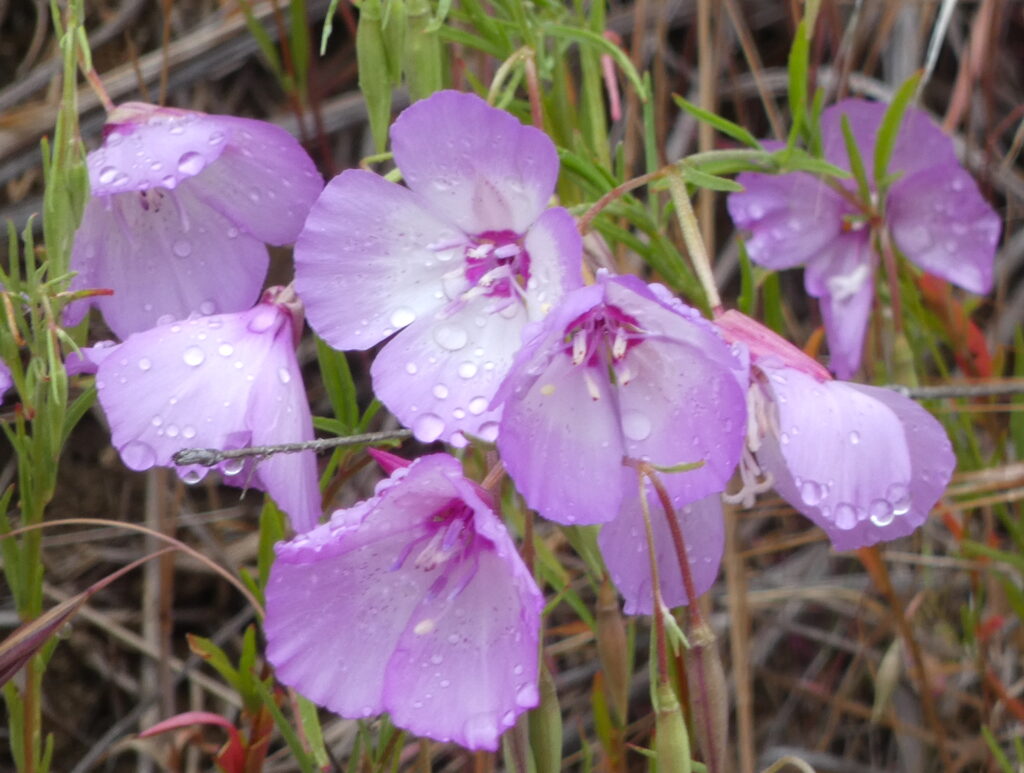
The rainy season arrived late this year, but not too late for local gardeners to add some native plants to their gardens. Planting native plants at the start of the rainy season—even when the rainy season arrives late and may be short this season—reduces the amount of irrigation needed to establish healthy growth. Waiting until after the first rains also makes it easier to dig holes for new plantings and uproot weeds.
Native plants can attract birds, butterflies and other native pollinators. They offer a rich variety of colors, textures and scents, and many are surprisingly adaptable. Native plants can fill a disused corner, or even thrive in pots on a patio or windowsill.
Planting truly local species in the garden may help reestablish a location-specific biome of plants, wildlife, insects, and even soil organisms. Local gardeners have a lot of options for a colorful, fragrant, site-specific native plant garden.
The sage family is a great place to start. Black and purple sage grows on hillsides all over the Santa Monica Mountains. These two species are intensely fragrant, don’t get too big, and provide attractive foliage to the garden.
Black sage, Salvia mellifera, which is really dark green, can be substituted for culinary sage in recipes—it has a stronger, more pungent flavor. Purple sage, Salvia leucophylla, is named for its lavender-colored flowers, which produce decorative seed pods once the plant has bloomed.
White sage, Salvia apiana, is a sacred plant for the Chumash and Tongva peoples, and is often available at local nurseries. It’s important in Chumash medicine but should not be used for cooking.
Hummingbird sage, Salvia spathacea, thrives in the shade under trees or in a deep pot on a shady patio. Its flowers really are a favorite with hummingbirds, and it’s aromatic leaves that smell like pineapple can be used to make a refreshing herb tea.
California sagebrush, Artemisia californica, the plant that gives coastal sage scrub its name, is not a true sage, it belongs to the artemisia family with its cousin mugwort. Both are easy to grow from cuttings and thrive in a sunny garden setting.
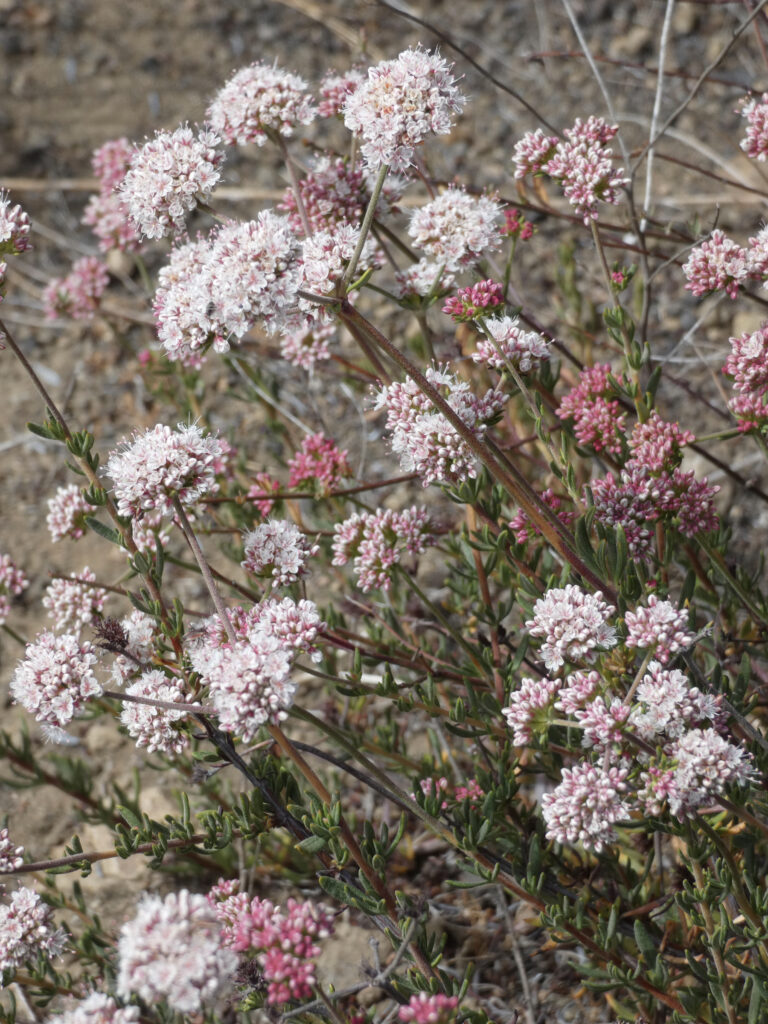
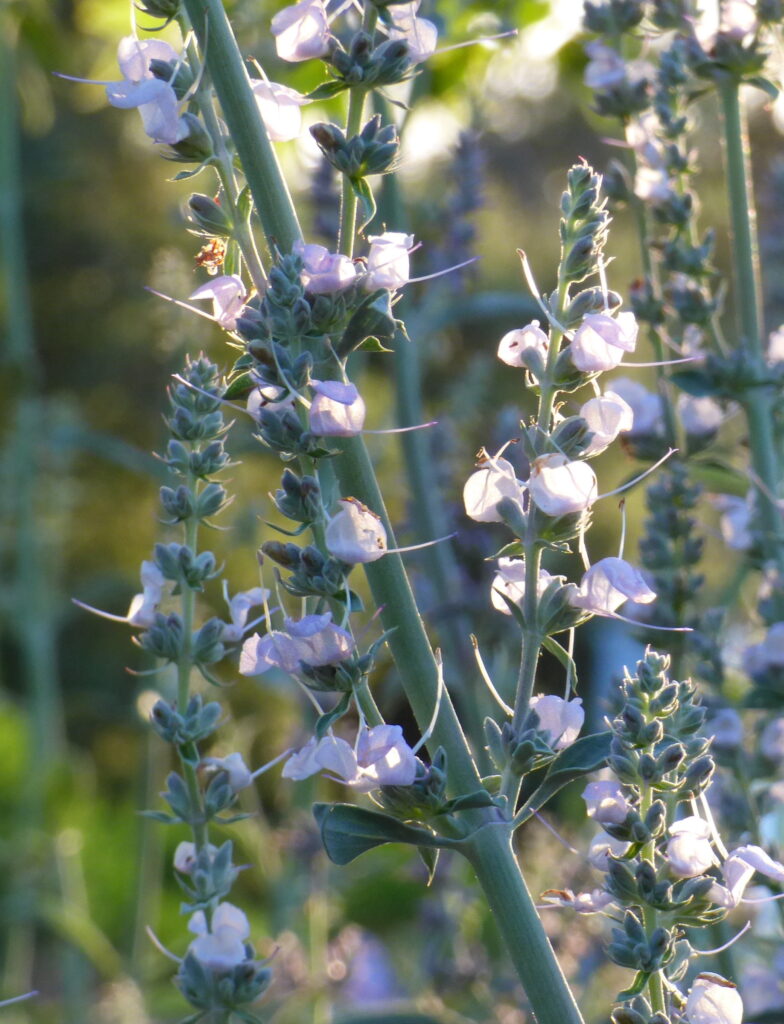
California buckwheat is also a great choice for a sunny spot. Its cream and dusty rose-colored flower clusters are followed by rust red seed pods, and grow on tidy, compact plants and attract butterflies and bees. Once established, this tough and adaptable native needs little water, and it looks attractive throughout the year.
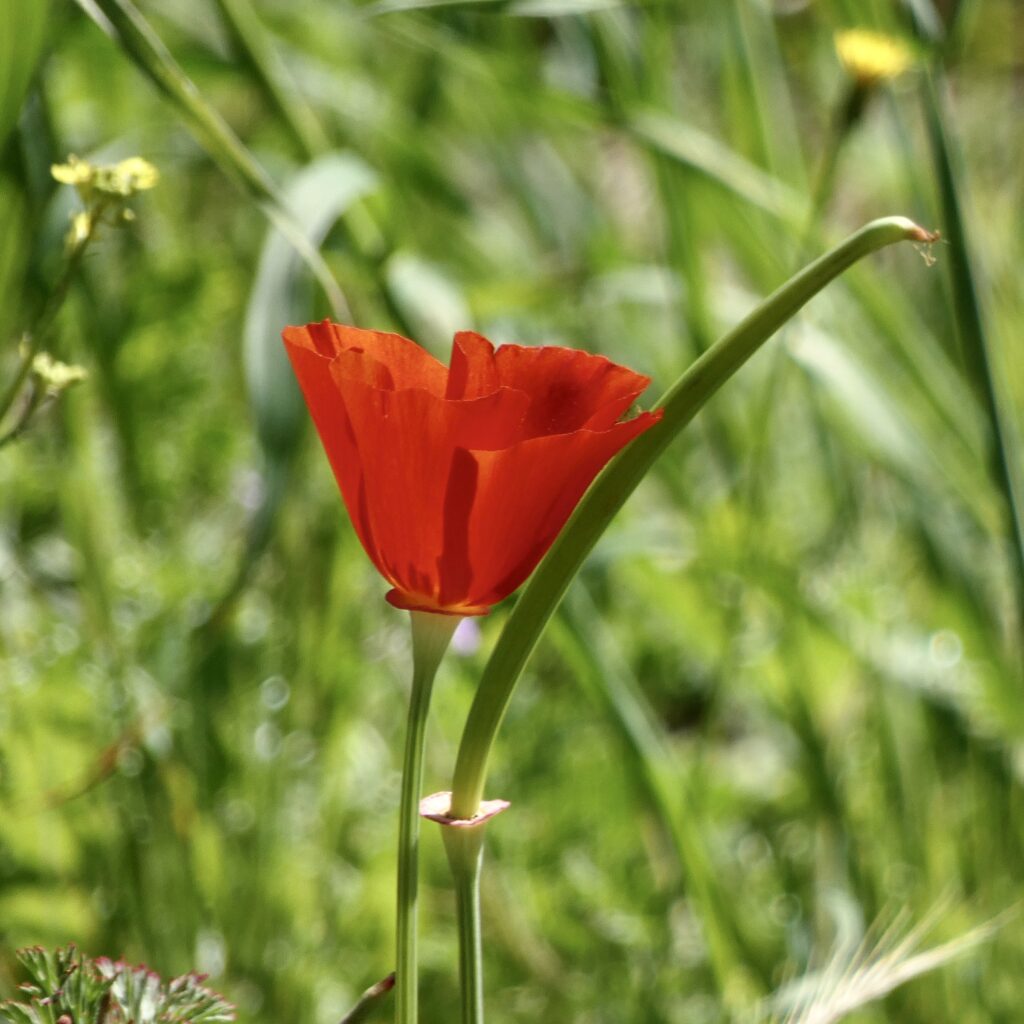
This is also the best time to sow wildflower seeds. Poppies, clarkia, gilia, coreopsis, lupine, and native sunflowers all grow well from seeds.
Some perennials can also be started from seed, including narrow-leaved milkweed, Asclepias fascicularis, the native host for the monarch butterfly.
Specialty seed suppliers offer some hard-to-find treasures like miner’s lettuce—edible, beautiful and shade tolerant—and Chinese houses, a shade-tolerant flower loved by native bees.
Some of the easiest native plants to grow from seed are native oaks. Acorns from valley oaks, coast live oaks and scrub oaks will all sprout readily with a little water and care. Oaks put down a long tap root before even sprouting leaves. A deep pot is the best choice for sprouting acorns, and it is important to plant the seedling out before it becomes root-bound, or the tree won’t thrive.
California black walnut, coffee berry (Frangula californica), and California bay are also easy to grow from seed. All of these species have the potential to grow large, so it’s good to have a plan for them.
Gardeners with limited space or those just starting to explore native plant gardening can start small, by planting a handful of wildflower seeds or a sage plant in a pot on the patio.
Adding native plants to the garden no matter how small can help create an oasis for wildlife. It’s a way of making a real difference to the environment in the Santa Monica Mountains, and it rewards the gardener with aromatic scents, the musical drone of hummingbirds and bees, and the ephemeral beauty of flowers and butterflies.
Native Plant Resources:
The Santa Barbara Botanic Garden is arguably one of the best places in the world to learn about gardening with California native plants and to find gardening inspiration. A limited number of plants are offered for sale at http://www.sbbg.org.
The Theodore Payne Foundation in Sun Valley offers plants, classes, and expert advice: theodorepayne.org.
Matilija Nursery in Moorpark is worth the trek for native plants and expert advice on Santa Monica Mountain species from longtime former resident and nursery owner Bob Sussman: www.matilijanursery.com.
Larner Seeds offers hard to find native plants, including a wide range of native grasses and even a limited selection of bulbs, but order fast, they sell out quickly. www.larnerseeds.com.
Annie’s Annuals is a reliable source for seeds and live plants in four-inch pots. They offer a good selection of California wildflowers and are great for plants like buckwheat and ceanothus. www.anniesannuals.com.
Las Pilitas Nursery, includes an extensive online encyclopedia of native plants and a wide variety of hard-to-find native plant species: http://www.laspilitas.com.
The Los Angeles Santa Monica Mountains chapter of the California Native Plant society offers a wealth of information, advice and guidance and has periodic plant sales. https://lasmmcnps.org






